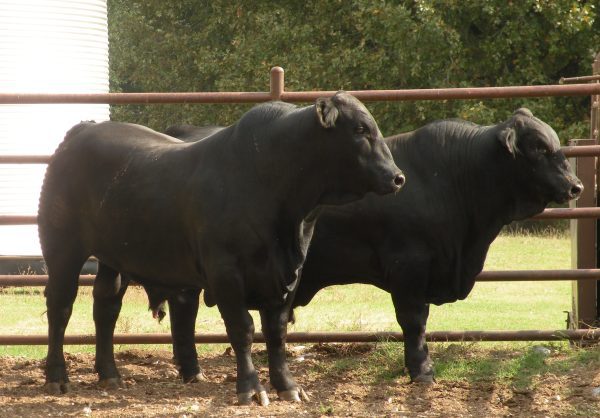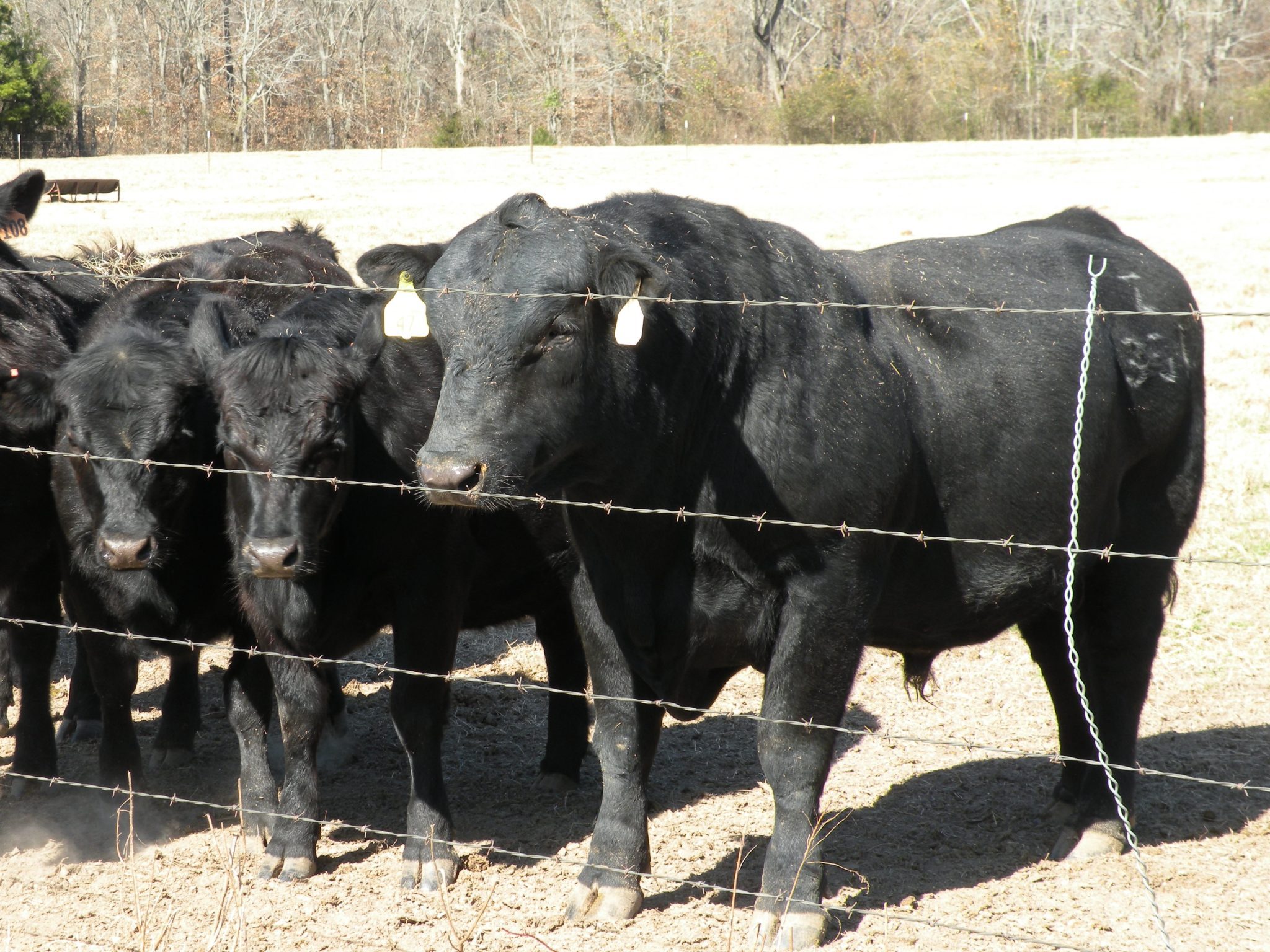Beef

Selection of herd sires for a cow/calf operation is a fundamental management task that should not be taken lightly. Making an informed and sound decision when selecting a herd bull will make significant impacts on the production level of your herd. If you are retaining replacements, the genetic contribution of your bull selection forms your herd for the future.
Set Production Goals
A good first step in the decision-making process is defining and setting production goals. Development of production goals and a management plan are key for the sustainability of your cow-calf operation. When setting goals, consider the type of animal that you want to produce and how you will market that animal. Your production goals will determine selection criteria and traits that are important to your operation in selecting herd sires.
Also, consider the features of your cow herd to select bulls that will complement the production goals. Some of these features include the herd size, the major breed composition of your herd, and the number of bulls you will need. Refer to Systems Approach to Beef Production: Developing a Basic Management Plan and Beef Herd Management Strategies for more information on setting production goals.
Plan for Number of Bulls Needed
Planning for your breeding season should account for how many breeding bulls are needed to successfully breed cows and heifers. To determine how many herd bulls are required, it directly depends on the age of bulls and the total number of breeding females. Bulls younger than 24 months of age should be limited to a maximum number of females to service. For bulls older than 24 months of age, a ratio of one mature bull to 25 to 35 females is recommended. Refer to table 1 as a guideline to plan for the number of herd bulls needed.
Table 1. Recommended Number of Females Per Bull Based on the Bull’s Age for Single-Sire Units *
Adapted from Alabama Beef Handbook, ANR-1323
| Bull’s Age | Number of Females |
|---|---|
| 12 to 15 months | 10 to 12 |
| 15 to 18 months | 12 to 18 |
| 18 to 24 months | 18 to 25 |
| 24 months and older | 25 to 35 |
Consider Crossbreeding
Crossbreeding involves a breeding plan to cross two or more genetically different breeds to increase hybrid vigor or heterosis. Heterosis will result in an increase in production traits, such as growth, fertility, and longevity. Crossbreeding is the method to capture these benefits of heterosis and allows for blending complementary strengths of different breeds. Crossbreeding can improve quality, gross pay weight of calves, enhance longevity, and productivity of cows. In designing a crossbreeding system, review established production goals. These goals will provide guidance in the direction of which breeds to apply in your crossbreeding system. Refer to Beef Herd Management Strategies for more information.
Evaluate Bull Conformation
 Proper confirmation of cattle is extremely important. Correct overall structure increases longevity and function of the cow herd. Bulls, cows, and calves need to be evaluated for overall structural correctness and soundness of feet and legs. Evaluate potential herd sires for proper confirmation with correct skeletal and hoof structure. Look closely at feet, leg, shoulder, and hoof structure to detect improper angles and claw shape. Incorrect confirmation can easily result in lameness. Selecting herd sires who are structurally sound will decrease lameness issues and provide a genetic foundation of correct conformation in your cow herd. For more information, refer to Beef Conformation Basics.
Proper confirmation of cattle is extremely important. Correct overall structure increases longevity and function of the cow herd. Bulls, cows, and calves need to be evaluated for overall structural correctness and soundness of feet and legs. Evaluate potential herd sires for proper confirmation with correct skeletal and hoof structure. Look closely at feet, leg, shoulder, and hoof structure to detect improper angles and claw shape. Incorrect confirmation can easily result in lameness. Selecting herd sires who are structurally sound will decrease lameness issues and provide a genetic foundation of correct conformation in your cow herd. For more information, refer to Beef Conformation Basics.
Examine Bull Breeding Soundness
A Breeding Soundness Exam (BSE) is a method of assessing a bull’s ability to breed and establish pregnancy in an appropriate number of healthy, cycling cows or heifers in a defined breeding season. A BSE should be completed each year 30 to 60 days before the beginning of a defined breeding season. A BSE consists of a physical exam and a semen evaluation by a licensed veterinarian. The physical exam evaluates a bull’s feet, legs, eyes, and reproductive tract and measures scrotal circumference. The semen evaluation assesses quantity, morphology (structure), and movement of sperm cells. Following a BSE, a bull is classified as a satisfactory breeder, unsatisfactory breeder, or deferred for re-examination. Refer to Bull Breeding Soundness Examinations for more information.
Evaluate Expected Progeny Differences
Expected Progeny Differences (EPDs) are genetic prediction tools beef producers can use when making breeding selection decisions. EPDs are generated by a breed association and are breed specific for use only within one breed. EPDs can be used to compare bulls for multiple traits and how an individual animal ranks when compared to the breed average. A vast number of EPDs are available for a broad array of traits, such as calving ease, birth weight, weaning weight, yearling weight, milk, carcass, mature size, and many others. Basic production traits include calving ease, birth weight, weaning weight, and yearling weight. An operation’s previously established production goals will guide the emphasis of traits for breeding selection decisions in applying EPDs. For more information, refer to Let’s Talk Beef Genetics.
Conclusion
Bull selection is an important building block in your beef cattle operation. Making sound bull selections makes a significant impact on the production level of your herd. Apply the fundamentals of setting production goals: assessing the number of bulls needed, crossbreeding systems, evaluating confirmation, and performing breeding soundness exams. Making informed, sound herd bull selections makes a significant impact on production level of your herd.

